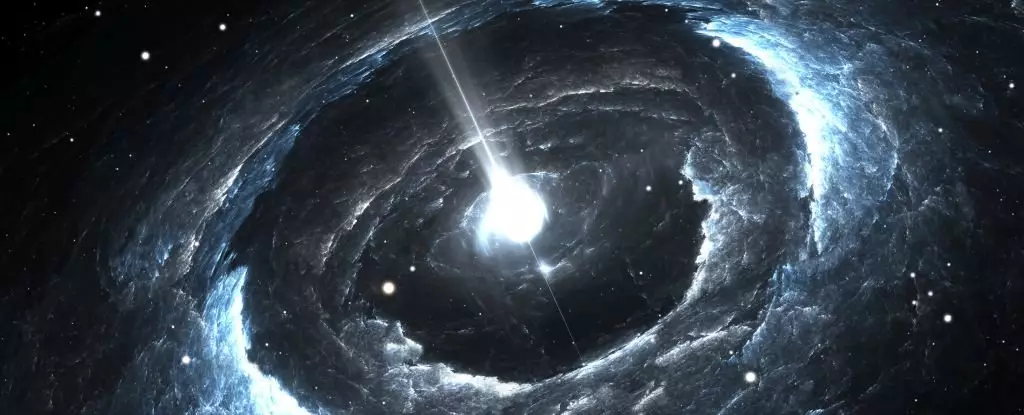Fast radio bursts (FRBs) have long captivated the attention of astronomers, thanks to their enigmatic nature and extraordinary intensity. Recently, the origin of the most potent and farthest-traveling FRB ever detected has been traced back to a densely packed cluster of seven galaxies. This breakthrough discovery sheds light on the diverse environments capable of generating these peculiar bursts of radio waves. The burst, known as FRB 20220610A, emanates from within the galaxy cluster, as revealed by new imagery from the Hubble Space Telescope and the meticulous analysis of an international team of researchers. This revelation strongly suggests that the interactions among the galaxies in the cluster may play a significant role in the creation of FRBs.
The transmission of FRB 20220610A challenges prevailing theories about the functioning of the Universe, leaving astrophysicists perplexed as they reexamine the conditions necessary for FRBs to form. The availability of the Hubble’s imaging was instrumental in determining whether the FRB originated from a single monolithic galaxy or from some intricate interacting system. Alexa Gordon, an astronomer from Northwestern University, remarks, “It’s these types of environments – these weird ones – that drive us toward a better understanding of the mystery of FRBs.”
The mind-boggling distance traveled by FRB 20220610A can be better comprehended through a comparison to the age of the Universe. The Universe is estimated to be approximately 13.8 billion years old, whereas the FRB signal stems from a time when the Universe was a mere 5 billion years old. Initial observations seemed to indicate the involvement of multiple galaxies surrounding an amorphous blob near the FRB’s origin. However, the revelation that there are precisely seven galaxies in close proximity caught researchers off guard. Astonishingly, these tightly packed galaxies could all comfortably fit inside our own Milky Way. The close proximity of these galaxies suggests interactions among them, potentially explaining the burst’s strength. Wen-fai Fong, an astrophysicist from Northwestern University, ponders, “There are some signs that the group members are interacting…I.e., they could be trading materials or possibly on a path to merging.” These dense galaxy-scale structures, known as compact groups, are exceedingly rare in the Universe.
FRBs continue to baffle and fascinate scientists due to their fluctuating signals and puzzling origins. The prevailing hypothesis asserts that FRBs originate from cosmic objects such as neutron stars or black holes. This recent breakthrough study serves as a reminder that as our telescopes improve, enabling us to observe space with ever-increasing resolutions, we gain the opportunity to unravel more mysteries surrounding these enigmatic signals. Dong, another researcher involved in the study, remarks optimistically, “With a larger sample of distant FRBs, we can begin to study the evolution of FRBs and their host properties…and perhaps even start to identify more strange populations.”
With each new discovery, the veil surrounding FRBs gradually lifts, allowing us to glimpse the extraordinary and mysterious phenomena that unfold in the depths of the cosmos. As our understanding expands and technology advances, scientists and astronomers anticipate further breakthroughs that will illuminate the origins and nature of fast radio bursts, bringing us closer to unraveling the secrets of the universe.


Leave a Reply